| 7 X3D Models |
X3D Model Descriptions |

|
bounding Box
|
A Collision node with a Shape node as a child is defined in the local coordinate system. A bboxSize of 2 2 2 and a bboxCenter of 0 0 0 is given to the Collision node. The browser should parse the Collision node without error and provide collision detection, as evident by the Box colliding with the viewer and turning a red color through both navigation and geometry collision with a stationary viewer avatar. |
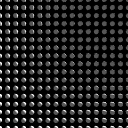
|
children 500
|
This tests check the minimum conformance requirement of 500 children per grouping node. A Collision node is defined with 500 children in its "children" field. Section 7.3 (Minimum Support Requirements) of the VRML specifications 500 children within a single grouping node. The test should generate 500 default spheres, which will turn a red color when any of them collide with the viewers avatar both through geometry movement (initially scripted using a PositionInterpolator), or through viewer navigation and direct collision. Modified by: Michael Kass 2/16/99 - Added collision detection (color change for all geometry) |
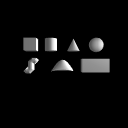
|
collidefalse
|
Test a collide value of false. A Collision node with a collide value of false has Shape node containing primitive geometry as its children. In addition the "root" Collision node has child Collision node with collide values of "true" for an IndexedFaceSet, an ElevationGrid and Extrusion geomtry children. Because collide is false for the root Collide node, collisions between the viewer avatar and geometry are not detected, and the viewer should be able to "enter" and "move through" all geometry. |

|
default collision
|
Test default Collision properties. A default Collision node is the parent of a Box geometry. To test collision support, the BOX geometry collides with the viewer avatar. The Box should turn red upon collision, showing that collision detection between a moving geometry, and a stationary avatar is supported. In addition, the viewer should be able to navigate toward the Box geometry in a "walking" type of motion, and collide with the Box geometry. This should also cause the Box to turn red, indicating that collision detection between a stationary geometry and a moving (navigating) avatar is supported. |
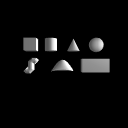
|
nocollision
|
Test browser behavior with no Collision node present. No Collision node are present in this world. By default, a browser should detect collisions, and not allow a navigating avatar to "enter" any primitive geometry IndexedFaceSet, ElevationGrid or Extrusion geometry. |
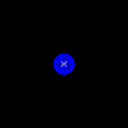
|
proxy
|
Test proxy support. A default Collision node is the parent of a Box geometry. To test proxy collision support, a Sphere geometry proxy collides with a stationary viewer avatar. The Sphere lineset should turn yellow upon viewer collision with the Sphere proxy, showing that collision detection between a moving proxy geometry, and a stationary avatar is supported. In addition, the viewer should be able to navigate toward the Sphere proxy geometry in a "walking" type of motion, and collide with the Sphere proxy. This should also cause the Sphere lineset to turn yellow, indicating that collision detection between a stationary proxy geometry and a moving (navigating) avatar is supported. In addition the viewer avatar should not be able to "enter" the proxy Sphere geometry when the viewer navigates into the proxy geometry. |
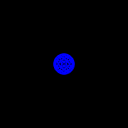
|
proxynochildren
|
Test proxy collision support with no children. A default Collision node is a parent of NO CHILDREN node. To test proxy collision support, a Sphere geometry proxy collides with a stationary viewer avatar. A Sphere lineset (that is not a child of the Collision node) should turn yellow upon viewer collision with the Sphere proxy, showing that collision detection between a moving proxy geometry, and a stationary avatar is supported, even if the Collision node has no children. In addition, the viewer should be able to navigate toward the Sphere proxy geometry in a "walking" type of motion, and collide with the Sphere proxy. This should also cause the Sphere lineset to turn yellow, indicating that collision detection between a stationary proxy geometry and a moving (navigating) avatar is supported, even if the Collision node has no children. In addition, the vewer avatar should NOT be able to "enter" the proxy Sphere geometry when navigating. |